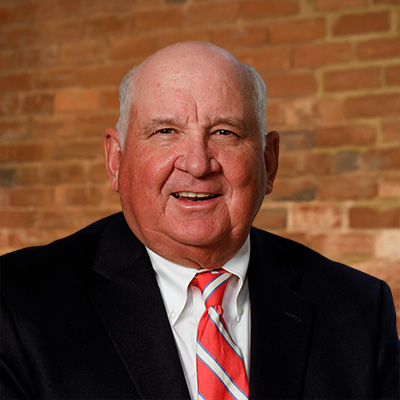As a lawyer who specializes in the handling of personal injury claims, I often encounter clients that have been injured in serious motor vehicle accidents. Over the years, I have found that many clients don’t know what types of coverage they have on their vehicles, the amount of the coverage they purchased, or how the answers to these questions may impact their case or our handling of it. In this article, I will attempt to generally outline the types of coverage that are typically available to purchasers of auto insurance and how to best protect yourself and your family in the event of a motor vehicle accident.
- Bodily Injury Liability Coverage
Bodily Injury (BI) Liability Coverage protects the owner or driver of a vehicle for all sums which the insured becomes legally obligated to pay because of bodily injury to an injured third party. This coverage also pays defense costs against legal actions. This type of coverage will protect you and members of your family from being personally liable up to the limits of the coverage, should you or a family member negligently cause an accident that results in bodily injury to another. - Property Damage Liability Coverage
Insurance policy limits are often cited with three numbers. The third number is Property Damage (PD) Liability Coverage. This coverage is similar to Bodily Injury Liability Coverage but is limited to damage caused by you to another person’s property, such as an auto, fence, telephone pole, garage or dwelling. As the name indicates, this coverage is limited to damage caused to property and does not include injury to persons. This coverage will protect you or a family member who negligently causes damage to or destruction of another’s property. - Collision Coverage
Collision Coverage, if purchased, protects your vehicle against direct and accidental loss or damage as a result of a collision with another vehicle or fixed object. This coverage is optional. Collision Coverage obligates your insurance company to repair or replace the insured vehicle if damaged or destroyed by a collision with another vehicle or fixed object. - Comprehensive Coverage
Comprehensive coverage, also known as “other than collision coverage” obligates your insurance company to repair or replace your vehicle for damage or destruction resulting from an event other than a collision with another vehicle or fixed object. For example, the damage is covered resulting from vandalism, riot, flood, wind and hail, fire or theft. This coverage is also optional. - Medical Expense/Medical Payments Coverage
Medical Payments (MP) Coverage is insurance coverage that pays up to a specified amount for medical expenses incurred as a result of a motor vehicle accident. This coverage pays regardless of who is at fault. “Med pay” and “med expense” coverage is typically provided in increments of $1,000, $2,000, or $5,000. In Virginia, a statute requires that med pay/med expense coverage is automatically “stacked” to provide the policyholder with the stated benefit multiplied by the number of vehicles insured under the policy up to a maximum of four (4). For example, if you have a limit of $2,000 and three vehicles on the policy, you actually have a limit of $6,000 available to you. - Uninsured Motorist Coverage
Uninsured Motorist (UM) Bodily Injury Coverage protects you and any occupants of your vehicle for bodily injury up to your policy limits as a result of an accident with a legally liable uninsured motorist or hit-and-run driver. This coverage protects an “insured” under the policy in the event that one of them is injured as a pedestrian. It also covers an “insured” while occupying a motor vehicle who is injured as a result of the negligence of a driver that is uninsured, or a driver who leaves the scene and is never identified. In Virginia, for example, a person who buys automobile insurance receives the same amount of uninsured motorist (UM) coverage as they have purchased bodily injury liability insurance unless they specifically request uninsured motorist coverage that is less than the liability coverage they purchased. The theory for this is that a policyholder should have the same rights to collect from their own insurance company if they are injured as a result of the negligence of an uninsured motorist as they have protected themselves against liability to a third party that may be injured as a result of the policyholder’s negligence. - Underinsured Motorist Coverage
Underinsured Motorist (UIM) Coverage is very similar to uninsured motorist coverage except that it provides coverage to an “insured” under the policy who is injured by someone who does have auto insurance but whose liability insurance limits are less than the uninsured motorist (UM) limits that the policyholder has secured.
For example, if you, the policyholder, have purchased uninsured motorist (UM) coverage of $300,000 per person and are seriously injured by a motorist who has only $100,000 per person of available liability insurance, then you can make a claim against your insurance company for the difference between your uninsured motorist limits and the at-fault driver’s liability limits. In this example, you could collect $100,000 from the negligent driver’s liability insurance company and then collect up to $200,000 from your own company under the underinsured motorist (UIM) coverage you have. - Towing and Labor Coverage
If your vehicle is temporarily disabled on the road, this coverage will pay your actual expense up to the amount of coverage you select and pay for to have your vehicle towed or for roadside labor to repair your auto. - A Word To The Wise
With skyrocketing medical expenses, the costs associated with a serious injury can be very high. Since an injured person’s medical expenses are a large part of what they are entitled to collect when injured as a result of the negligence of someone else, we often encourage clients to obtain at least $300,000 of liability insurance. This amount of coverage will protect you or a family member from liability to a third party up to a maximum of $300,000.
Collision coverage, comprehensive coverage, and towing coverages are optional. We would suggest that you consult with your insurance agent regarding the cost of this coverage to determine if it is protection that you want and are willing to pay the premium for.
I hope this article is helpful to you and your family in making your coverage decisions regarding your auto insurance. Being well insured is your best protection against the consequences of a serious accident – whether you are at fault or you are the victim.
For a comprehensive guide on how to purchase insurance, and what to do if you’re involved in an accident, download our free All About Insurance eBook, featuring hand-selected expert articles written by Allen & Allen attorneys.




